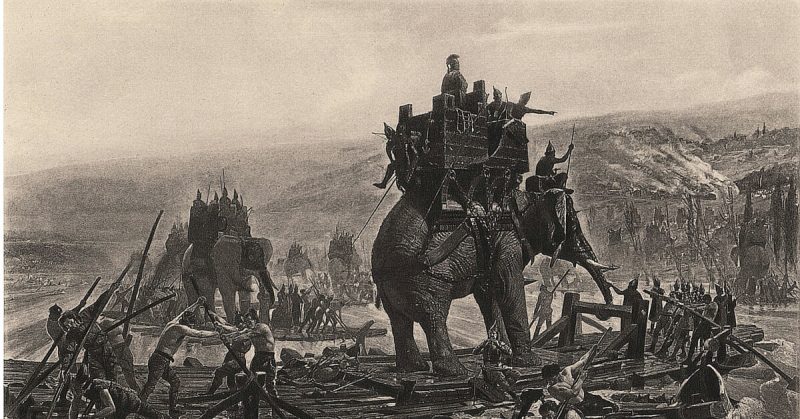In 218 BC, Hannibal marched an army consisting of soldiers, mules, horses and elephants from Spain, over the Alps, and into Italy to attack the Romans at the start of the Second Punic War. His precise route through the Alps has been debated for years.
Bill Mahaney, a geologist and professor emeritus at York University in Toronto, led a team that
as found evidence supporting a route proposed by British biologist Sir Gavin de Beer. From their study, it appears that the army marched through the Col de la Traversette on the French-Italian border.
“If confirmed, the findings presented here have far-reaching implications for solving the Hannibalic route question and, more importantly, for the identification of a site that might be expected to yield significant historical archaeological data and artifacts related to the Punic invasion,” the researchers wrote in the first part of a two-part study published in the journal Archaeometry.
Mahaney has been interested in classical history as a hobby for decades. He knew about the debate over Hannibal’s route and thought he might be able to determine it from descriptions of the geology in historical texts. As an example, the Greek historian Polybius mentions a two-tier rockfall in his account of the trek.
While involved with an unrelated study, Mahaney kept an eye out for clues that matched those descriptions. Over time, he accumulated enough clues to venture a hypothesis as to where the army must have passed.
There is a mire an area where rocky mountain terrain gives way to vegetation, with a stream below the Col de la Traversette that would make a good place to water animals and allow them to feed.
Mahaney took a team and drilled about 70cm into the soil and retrieved cores of sediment. The cores had 3,000 years of sediment. Within the cores was a layer that was churned up.
“I said to the other guys, ‘You ever seen anything like this?’ They just looked at me.”
Mahaney said he’d pulled “two or three hundred cores from around the world and I’ve never seen anything like this.’“
“So this is either frost or one hell of a group of people coming through with animals churning the hell out of this peat.”
There was no evidence of frost in nearby sites from that time period.
The churned up layer had a lot of organic material, including “some poop – quite a lot of it,” Mahoney said.
Chris Allen, a microbiologist at Queen’s University Belfast in Northern Ireland, analyzed the bacteria in that layer and found that more than 12% were Clostridia. That type of bacteria usually is two or three% of the bacteria found in soil but it is 70% of the bacteria in a horse’s gut. There was also a high amount of bile acids and fats that are found in mammal feces. The evidence pointed toward a large amount of horse and mule dung.
“We found scientifically significant evidence of these same bugs in a genetic microbial signature precisely dating to the time of the Punic invasion,” said Allen in a news release.
The team did not manage to find any specific evidence of elephant dung.
“You’d have to get very lucky to find that,” said Mahaney, noting that Hannibal had only 37 elephants (compared to more than 8,000 horses and mules.)
Carbon dating puts the date of the layer at between 26 and 570 BC. This coincides with the period when Hannibal traveled to Italy.
Mahaney said that it was unlikely that the layer could have been left by another large group of animals passing through. There was little reason for such a large group to pass through at such a high altitude. Also, groups smaller than Hannibal’s had presumably passed through at other times, but they had not left a similar mark in the cores.
The team is waiting for the results of analysis of tapeworm eggs found in the layer. They could help pinpoint the geographic origin of the animal that deposited them. Hannibal’s horses are known to have come from Spain.
The study was funded by the QUESTOR Centre, Invest Northern Ireland, the Geological Survey of Ireland, the Irish Research Council, and Quaternary Surveys, as well as through travel and research grants from York University.
